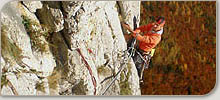History and Culture Sites
Besides beautiful landscapes Romania also means people, history and culture. In order to understand better our country we invite you to discover medieval cities, fortresses, castles and palaces from Transylvania and Southern Carpathians area, monuments that speak about the long history of Romania.
Peles Castle is a Neo-Renaissance castle placed in an idyllic setting in the Carpathian Mountains, near Sinaia, on an existing medieval route linking Transylvania and Wallachia. It was built as a summer residence for the royal family between 1873 and 1914 by King Carol I, Romania’s longest serving monarch, but its inauguration was held in 1883.
Brasov medieval city, also known as Kronstadt, is the capital of Brasov County, part of Transylvania. The fortress was built by Teutonic Knights beginning with 13th century. The Black Church is situated in the center of the medieval city and is one the the largest Gothic style churches in SE Europe. It is also known for its impressive oriental rug collection, its 6 tone church bell and its 4000 pipes organ that was kept almost unchanged.
Sibiu (Hermanstadt) is the capital of Sibiu County, part of Transylvania. It was the largest and wealthiest of the seven walled citadels built in the 12th century by German settlers known as Transylvanian Saxons. Its medieval historic center was very well preserved and was designated a European Capital of Culture for the year 2007, in tandem with Luxembourg. Sibiu is also a candidate for UNESCO’s World Heritage Sites.
Sighisoara (Schassburg) is a small medieval fortified city dating from 12th century listed by the UNESCO as a World Heritage Site for its outstanding testimony to the culture of the Transylvanian Saxons. The medieval city was very well preserved and it is also known as the birth place of Vlad the Impaler (Vlad Dracul).
The fortified church from Viscri, also known as Weisskirch, has its origins in early 12th century. It is also one of the best preserved of its kind being listed by the UNESCO as a World Heritage Site. It is also known for the big sustain it receives from The Prince of Wales who visited this place a few times and even bought a house in this village.
The fortified church from Prejmer was built by Teutonic Knights in early 13th century inside Tartlau (Prejmer) fortress, the eastern-most settlement of the Transylvanian Saxons. It is one of the best preserved fortified churches in Europe and it is listed by the UNESCO as a World Heritage Site.
The fortified church from Harman, also known as Honigberg, was built in the 13th century. Its 32m high church bell tower makes this edifice the highest fortified church in Burzenland (Tara Barsei).
Brancoveanu Monastery from Sambata de Sus is located on the footprints of Fagaras Mountains on Sambata Valley. It was built in the late 17th century by Constantin Brancoveanu, the ruler of Wallachia. The architectural style fits entirely Brancoveanu style, which emerged in Wallachia at the end of the 17th century and the beginning of the 18th century.
Rasnov Fortress is a citadel build by the peasants from Rasnov, also known as Rosenau, during 13-14th centuries. The main purpose was to protect the city from Tatar invasions.
Bran Castle is a fortress situated on the border between Transylvania and Wallachia, marketed as “Dracula’s Castle” although it has no connection with the titular character in Bram Stoker’s Dracula. The castle has only tangential associations with Vlad the Impaler, voivod of Wallachia, the putative inspiration for Dracula.














